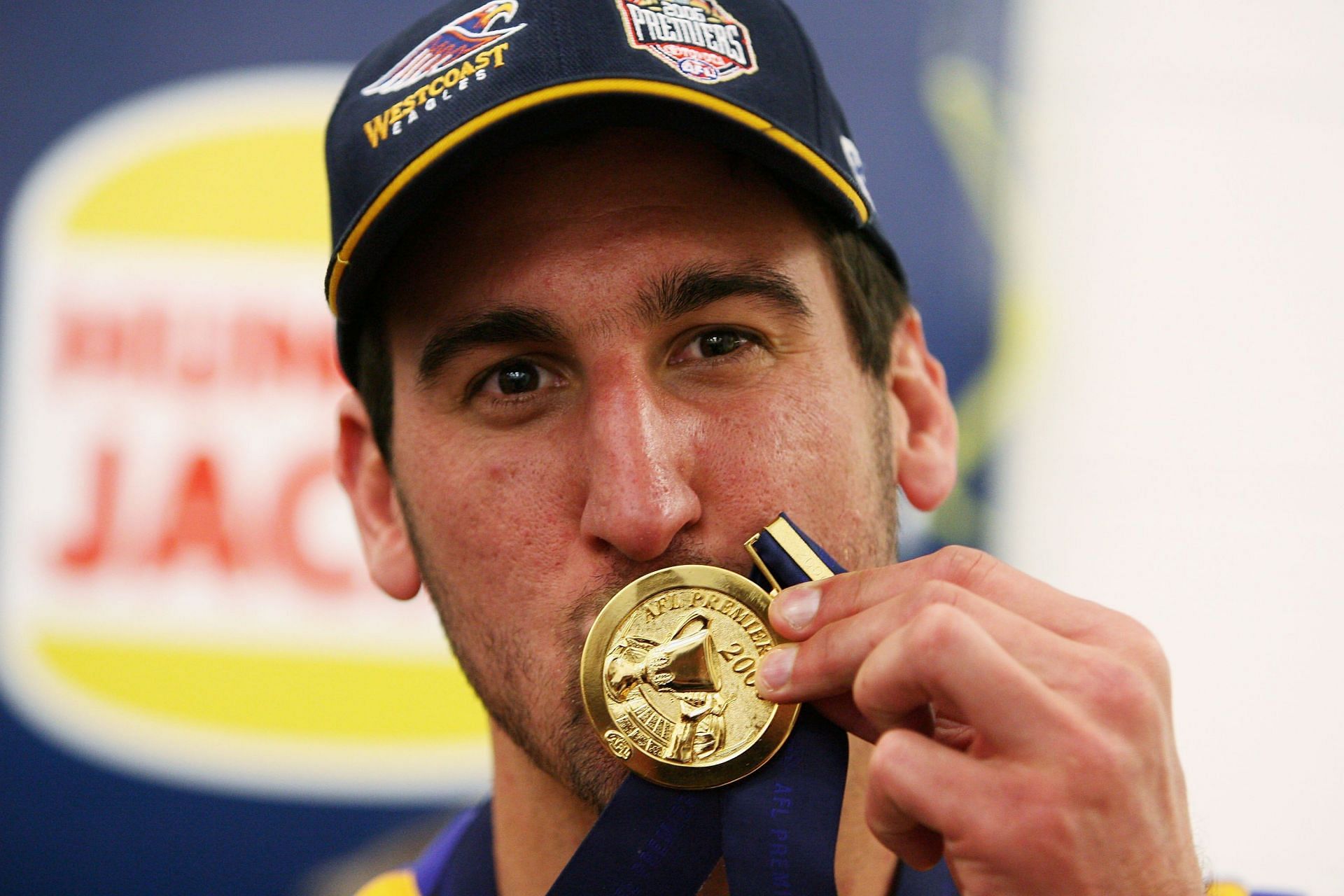
5 best ruckmen in AFL history ft. Dean Cox
The ruckman is one of the most important members of an AFL team. They are typically athletic and tall to contest at centre bounces and stoppages such as boundary throw-ins and ball-ups. The average ruck is over 200 cm or 6'7 tall. As a result of the fitness and physical demand, most rucks have large builds or bulk up to prevent injuries.
There are different kinds of rucks depending on the tactical demands of the team. The mobile ruck covers a lot of ground and can move to kick goals or move to defend goals. A heavy ruck typically crashes into opponents to force the ball out of their hands and move it to their own teammates.
Over the years, footy fans have seen different types of rucks come and go. This article lists the most dominant rucks the AFL has seen.
5 best ruckmen in AFL history ft. Dean Cox
#5 Dean Cox
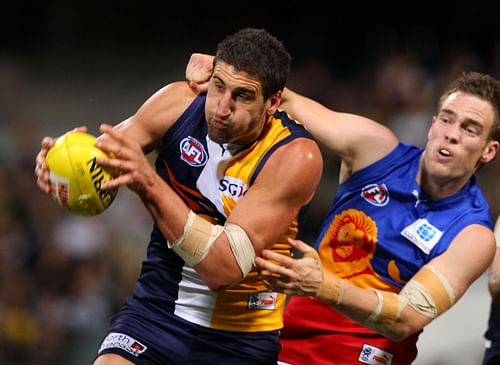
He started his senior football career with East Perth and was fifth choice ruckman for them. He impressed and was moved to first choice and he also received the Simpson medal for his efforts.
He made his AFL debut in 2001 for West Coast Eagles. He won the premiership with them in 2006. He was also acknowledged as the best ruckman in the league despite playing for a side that struggled for many seasons. He made the All-Australian team six times: 2005, 2006, 2007, 2008, 2011 and 2012.
He effectively won knock-outs and assisted the likes of midfielders Daniel Kerr, Matthew Priddis and Matt Rosa.
He finished his career with 6,628 hitouts, an AFL record at the time of his retirement in 2014.
#4 Jim Stynes
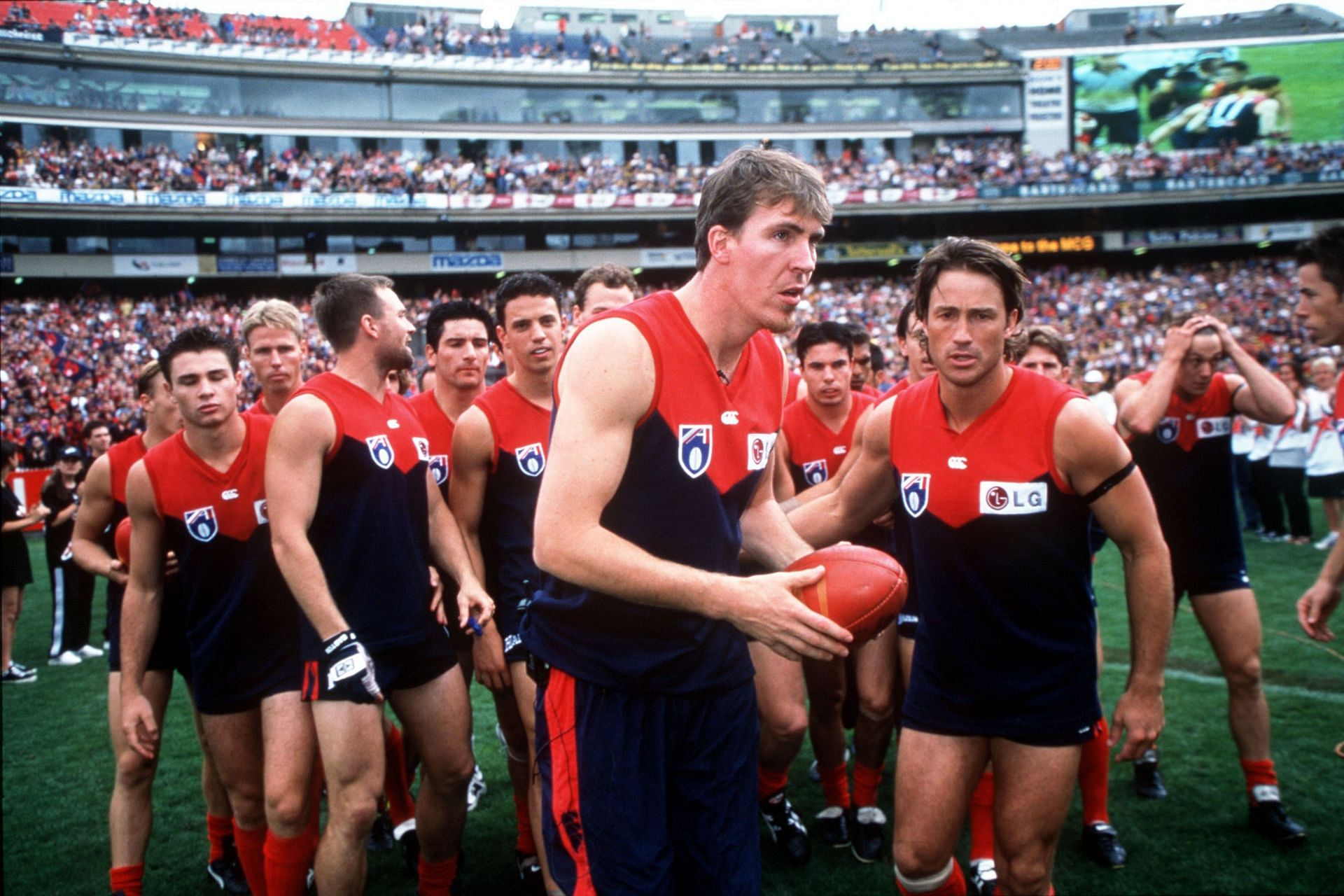
Stynes debuted for Melbourne in 1987 as result of the Irish experiment. He played an unbeaten league record of 244 consecutive games between 1987 and 1998 as a mobile ruckman. He was part of the team that qualified for Melbourne's first finals series since 1964.
In 1991, he dominated the season with a league-best 214 marks and won the Brownlow. He was also awarded the AFL Players Association MVP trophy and named the All-Australian ruckman. He won his first club best-and-fairest award for Melbourne.
He used his extraordinary endurance to redefine the role of the professional ruckman. He ran the whole game and gained possession across the entire ground instead of focusing on hitouts and playing in bursts.
He made the All-Australian team again in 1993. He played a total of 264 AFL games, all at Melbourne, placing him second on the club's all-time games tally at the time.
He retired in 1998 and was inducted into the Australian Football Hall of Fame in 2003. He is a part of Melbourne's Team of the Century.
#3 Simon Madden
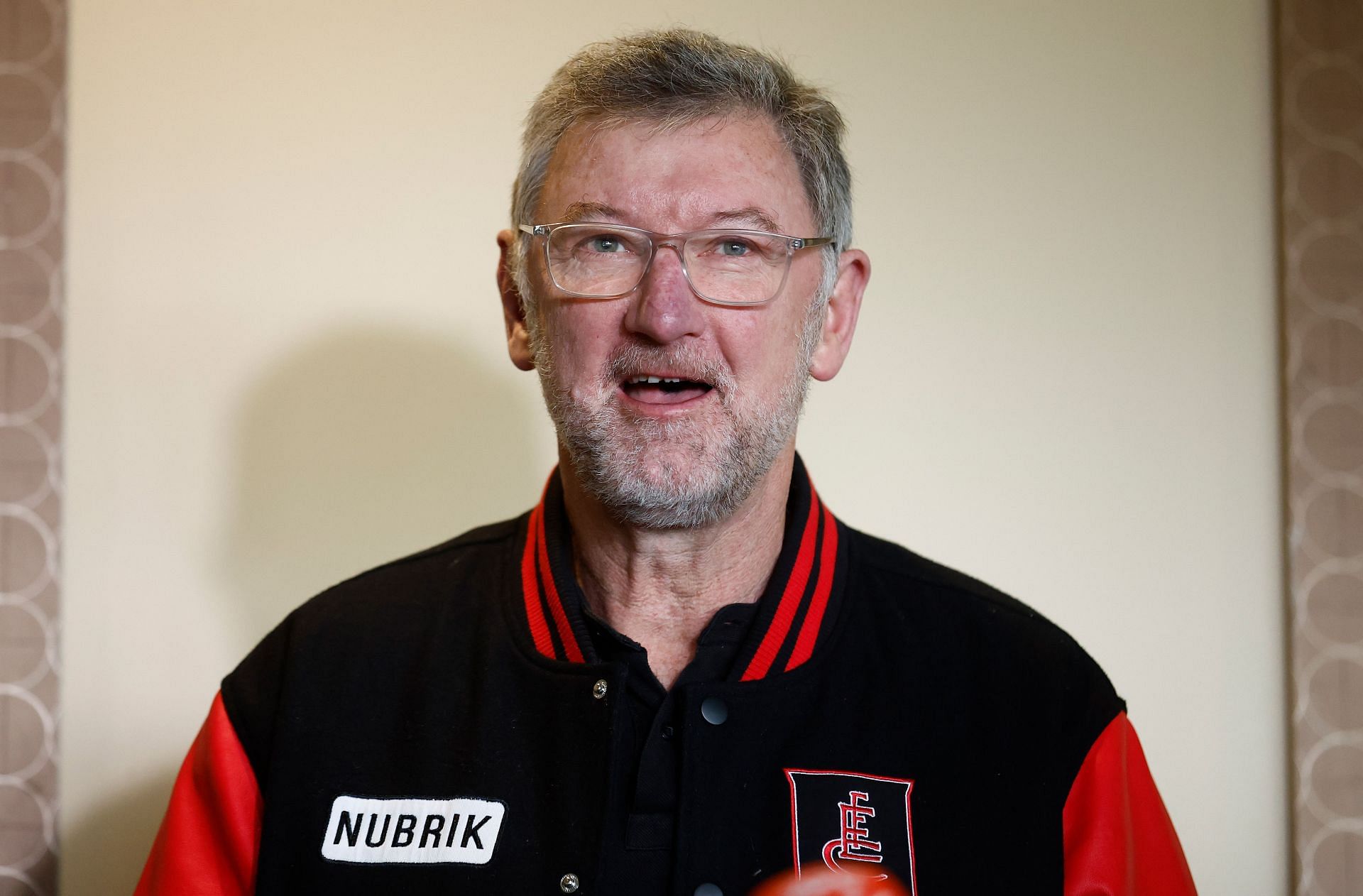
Madden debuted for Essendon in 1974. He played 378 senior matches, the second-most by any Essendon player (behind Dustin Fletcher) and eighth overall in the league’s history.
He won four Essendon best and fairest awards: 1977, 1979, 1983 and 1984 and captained the side in the 1980 and 1981. He was a part of the back-to-back premiership sides in 1984 and 1985 and won the Norm Smith in 1985. He made the All-Australian team on three occasions: 1983, 1987 and 1988. As a part-time forward, he scored 575 goals and was leading goal kicker in 1980, 1982 and 1991.
He retired in 1992 and he was inducted into the Australian Football Hall of Fame in 1996. He was named in the ruck in Essendon's Team of the Century and also named as the fifth-best player to ever play for the club in the 'Champions of Essendon' list that was released in 2002.
#2 John Nicholls
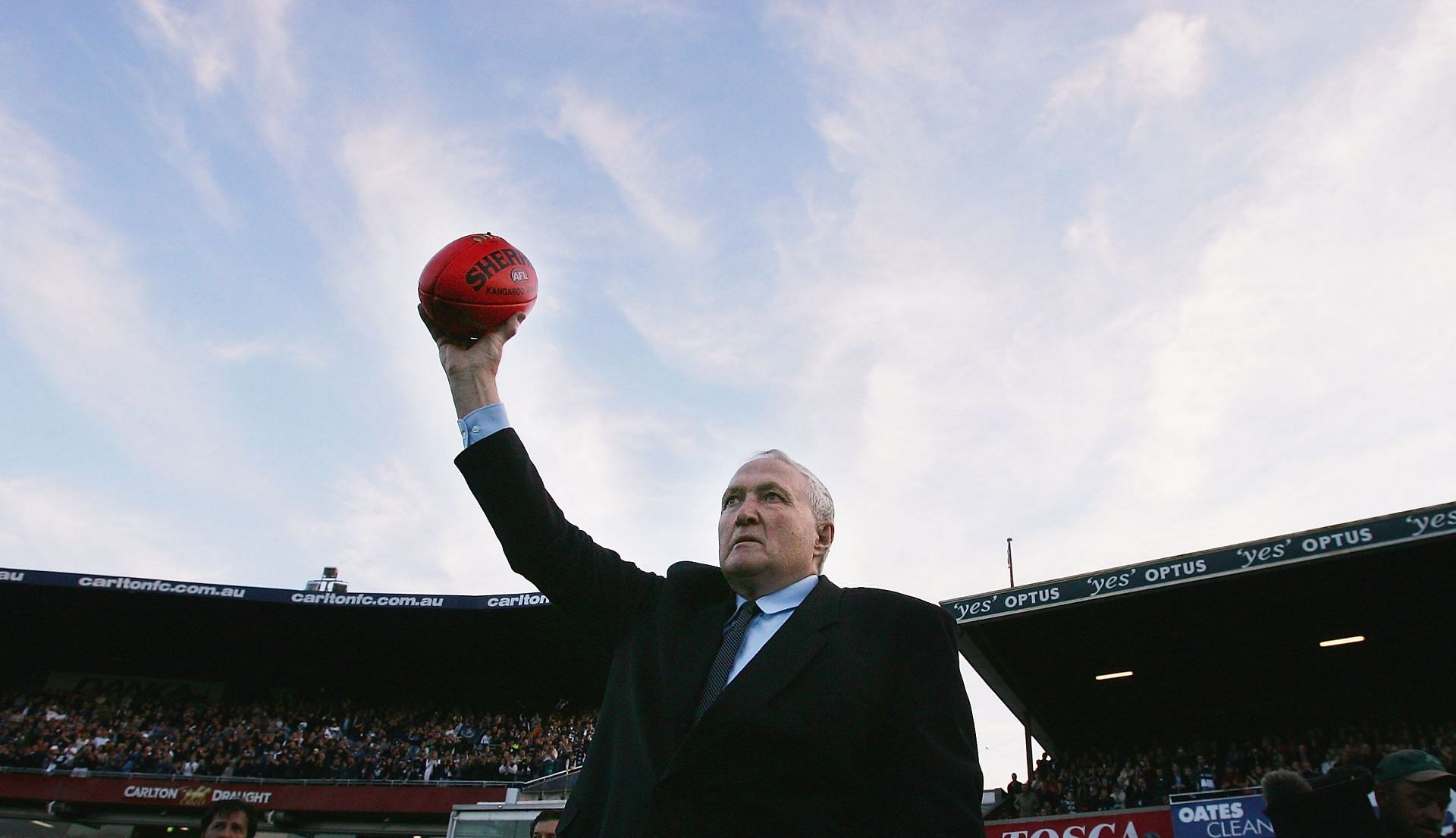
Nicholls was recruited from the Maryborough Football Club in 1957 to join his brother who was recruited the year before. He is widely regarded as one of Australian football's greatest players. He was the first Carlton player to reach 300 games and was declared the club's greatest player. He won three premierships with the club: 1968, 1970 and 1972.
He compensated for his small stature with his intelligence and imposing physical presence, which earned him the nickname 'Big Nick’. He was inducted as an inaugural Legend in the Australian Football Hall of Fame in 1996.
He won the Carlton best and fairest player five times: 1959,1963, 1965, 1966 and 1967. He never placed below third throughout his time with the Blues. He was named in the AFL Team of the Century as resting ruckman.
#1 Polly Farmer
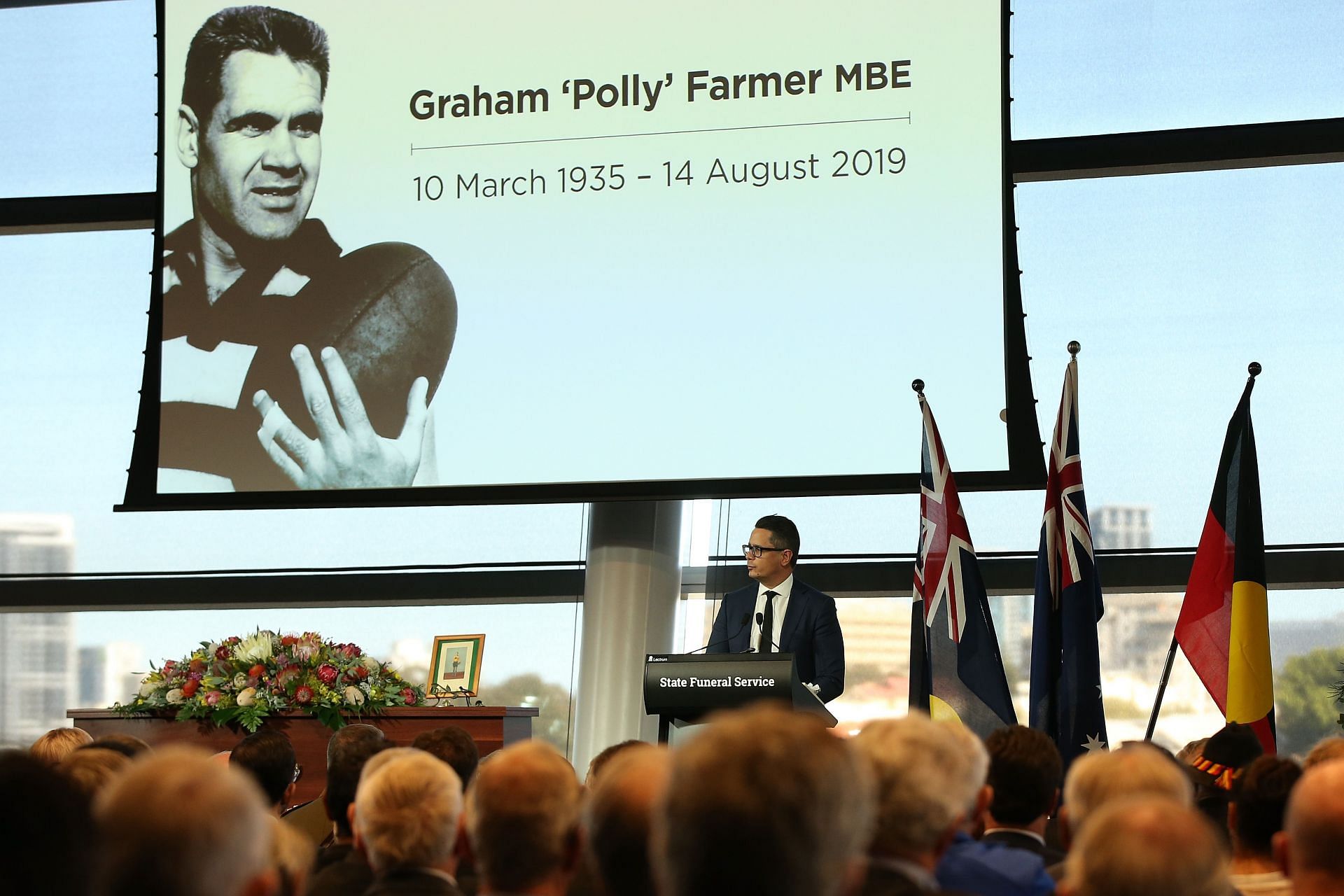
Farmer began his career with the East Perth Football Club in the WAFL- WAFNL in 1953. He played a total of 176 games for them till 1961. He was the club's best and fairest seven times only missing out on the award in 1958. He won the premiership with them in 1956, 1958 and 1959.
He won the Sandover medal in 1956 and 1960 but received a retrospective one for tying with East Fremantle’s Jack Clarke for his 1957 season. He received the Simpson medal for being the best on ground in the 1959 grand final.
He joined Geelong in 1962 and a knee injury ended his season on his debut game. He was part of the team that were defeated by Fitzroy in the ‘1963 miracle match'. They later won the grand final that season. He received Geelong's best and fairest award in 1963 and 1964.
He returned to the WAFL in 1968 and joined former rivals, West Perth. He became captain and they won flags in 1969 and 1971.
In 1971, he became the first player in elite Australian rules football to play 350 career games. Farmer retired after the Grand Final at 36. Farmer is considered one of the greatest footballers in the game's history and he is recognised for the way he revolutionized ruckwork and handballing.
Farmer became the first Australian footballer to receive a Queen's honour when he was named a Member of the Order of the British Empire (MBE) in the New Year honours list in 1971.
As an inaugural inductee of the Australian Football Hall of Fame, he was one of the 12 official "Legends” in 1996.
He has been nominated as the first ruckman in every Team of the Century for each of the two leagues he played and the three clubs he played with. He is also in the Indigenous Team of the Century, in which he was the captain.